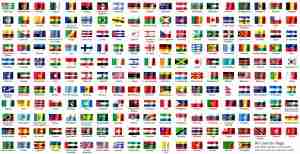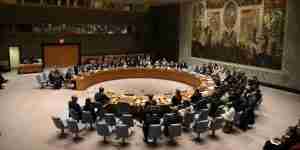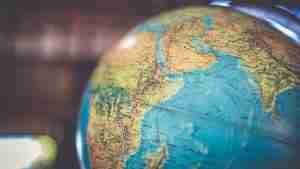Power is central to international politics, especially from a realist perspective. Hans Morgenthau, a key realist thinker, stated, “Whatever may be the ultimate end, power is always the immediate end.” In this context, power refers to a state’s ability to influence other states. Power is often defined as relational (depends on others), relative (compared to others), and compelling (can force actions).
1] Elements of Power
Geography: It is said that ‘USA is what it is, not because of who they are but because of where they are.’ It’s topography, presence of resources, isolated location demography etc. have been major factors behind hegemonic position of USA.
- Economic Strength: A strong economy allows for better defence, diplomacy, and development. Germany’s economic prowess gives it substantial influence in the EU.
- Political Stability: Stable governance and consensus on foreign policy enhance a nation’s strength. For instance, China’s consistent leadership has facilitated its rise. India is also benefitting from a stable government for more than a decade.
- Leadership: Though structural realists eliminate the personality factor, yet leadership does play a role. Kautilya, one of the earliest scholars on geo-politics gave the theory of the elements of state known as ‘Saptanga theory.’ He calls King as ‘Nabhi‘. The strong King can convert even the weak elements of sovereignty into the elements of strength. We can see the changing trends in US foreign policy since Mr. Trump first assumed the office in 2017.
- Military Capability: A well-equipped and trained military deters threats and projects power. The USA’s global military presence exemplifies this.
- Intelligence Capabilities: Nations with robust intelligence agencies, like the CIA (USA) or Mossad (Israel), can better navigate international challenges. The strength of countries like Russia, USA, Israel, Britain comes from the highly professional intelligence bodies.
- Technology: Technological advancements can boost military and economic power. For example, countries leading in AI and cybersecurity hold significant influence in contemporary times. To some extent, technology has reduced the importance of geography.
- Social Cohesion: It is easier to make foreign policy decisions if social composition is homogenous. If society is heterogenous, it becomes difficult. e.g. India could not have the sound policy towards Israel for long because of the domestic compulsions, the sentiments of minorities.
2] Measurement of Power
While elements provide potential, actual power depends on how effectively a nation utilizes them. Further, since countries do not disclose their real status in terms of military capabilities, it is difficult to calculate the amount of power exactly. However, countries are often categorized into following on basis of amount power they can wield.
- Superpowers: Nations with unmatched global influence (e.g., USA). Other countries even in combination cannot defeat superpower.
- Great Powers: Countries with significant regional or global roles. These countries are capable of defending their interest on their own. There are P5 members besides USA.
- Middle Powers: Nations with moderate influence, which can defend themselves in coalition with others. (e.g., India, Brazil, Indonesia, Japan).
- Small Powers: Countries with limited or no influence.
3] Types of Power
A] Hard Power
Hard power involves the use of coercive means—such as military force or economic sanctions—to influence the behaviour of other states. It relies on tangible resources like armed forces and economic strength to compel others to act. E.g. military interventions or threats, economic sanctions, trade restrictions etc.
B] Soft Power
Soft power is the ability to shape the preferences of others through appeal and attraction rather than coercion. Coined by political scientist Joseph Nye, it encompasses a country’s culture, political values, and foreign policies that are seen as legitimate or having moral authority. E.g. Promoting cultural exports like music, films, and literature, establishing educational exchanges and scholarships etc.
| Hard Power | Soft Power |
| Materialistic or resource intensive | Non materialistic |
| Concrete | Invisible |
| Compelling in nature | Relies on consent |
| It is at the disposal of state | It is dispersed among the institutions of civil society |
| State can use it any time | Since it is dispersed, state may not be able to use it as and when required |
| Can be acquired in short time | It takes long time to build |
C] Smart Power and Sharp Power
Traditionally, realists give greater weightage to hard power. However liberals like Joseph Nye held that the importance of hard power has declined considerably in 21st century because of complex interdependence. One of the reason for decline of USA’s hegemony is the greater reliance on hard power.
However later on Nye modified the views and accepted that soft power alone may not work. He gave the concept of Smart Power, popularized by Hillary Clinton. Joseph Nye defined Smart power as an approach ‘which underscores’ the necessity of strong military power, but invest heavily in institutions, partnerships and alliances.
Joseph Nye is also concerned about the rise of Sharp Power as an alternative to the Soft Power, Sharp Power represents the power of authoritarian states, the power of propaganda, which aims to attack the credibility of western liberal democracies e.g. China’s policies.
D] Fast Power
John Chipman has given the concept of Fast Power. According to him, speed has become the determinant of power. According to him, what matters in 21st century is not the heft but how much a country is agile and adaptive. The rule of the present world is not the survival of the fittest rather the survival of the fastest.
4] Polarity of Power
The concept of polarity of power was given by structural realists like Kenneth Waltz and Mearsheimer. Polarity denotes the distribution of power across the globe.
A] Unipolarity
Only one dominant power exist at global level. (e.g., post-Cold War USA). It is suggested that this is most unstable global order.
There exists a single hegemon, who will overstretch. There will be free riders that will take the advantage and there will be relative decline of power of the hegemon.
Also, when there is single superpower, the country may suffer from Megalomania. It will think that there are no limitations on its powers. Will itself start destroying the order which it has built by taking unilateral actions. Like USA undermined UNSC e.g. in case of 2nd war against Iraq in 2003. Same can be said about USA’s approach towards WTO currently.
B] Bipolarity
There are wo major powers on globe. (e.g., USA and USSR during the Cold War). This is seen by scholars as stable due to clear power balances. Further, it is easy to keep watch on the actions of each other. Additionally, the two superpowers will contain anarchy in their own zone of influence. Realists like Kenneth Waltz argue that bipolar systems are the most stable due to clear deterrence and balance.
C] Multipolarity
Multiple influential states in global order. The situation of Europe before WWI can be characterized with this. There were multiple powers like UK, France, Germany etc. While it offers balance, it can also lead to unpredictability and conflicts. This is most unstable. Greater confusion prevails, more fingers are on the trigger button. It is difficult to keep watch and there are greater chances of even the accidental war.
D] India’s Perspective
India advocates for a multipolar world to ensure strategic autonomy and prevent dominance by any single power. However, in South Asia, India prefers to maintain its regional influence and is cautious about external powers, like China, gaining a foothold.
5] Hegemonic Stability Theory
Scholars: Given by Charles Kindleberger, developed by Robert Gilpin.
Hegemonic stability theory suggests that hegemonic world order is stable world order. It is based on the assumption that the peace requires some ‘global policeman’ i.e. some state which can establish rule of law by establishing the norms. It basically means establishing liberal international order.
Further, that actors (hegemon) should have willingness and capacity to ensure that other actors observe the norms. It should be in a position to punish those who destroy the liberal world order.
There are two qualities of hegemon i.e. capacity and willingness. e.g. till 2nd WW US did not have willingness though it had capacity.
Examples of hegemon: Up till 2nd WW Great Britain (Pax Britannica). After 2nd WW – USA (Pax Americana). The term Pax denotes dictated peace.
Span of hegemony: Normally hegemony continues for 100 years. After which it starts declining. Why? Hegemon overstretch, free riders take the advantage. Why countries will accept the hegemon? Hegemon provides order and security. Why hegemon would accept to become hegemon? Since hegemon dictates the rules, hegemon is going to benefit by the system. Thus hegemony denotes leadership.
Hegemonic stability theory is a realist theory which accepts the liberal international order. The realist theory of hegemony is different from the Gramscian theory. Gramscian theory looks ideology and culture as the basis of hegemony. Realist theory include military and economic power.












Comprehensive National Power .. can be mentioned as well.